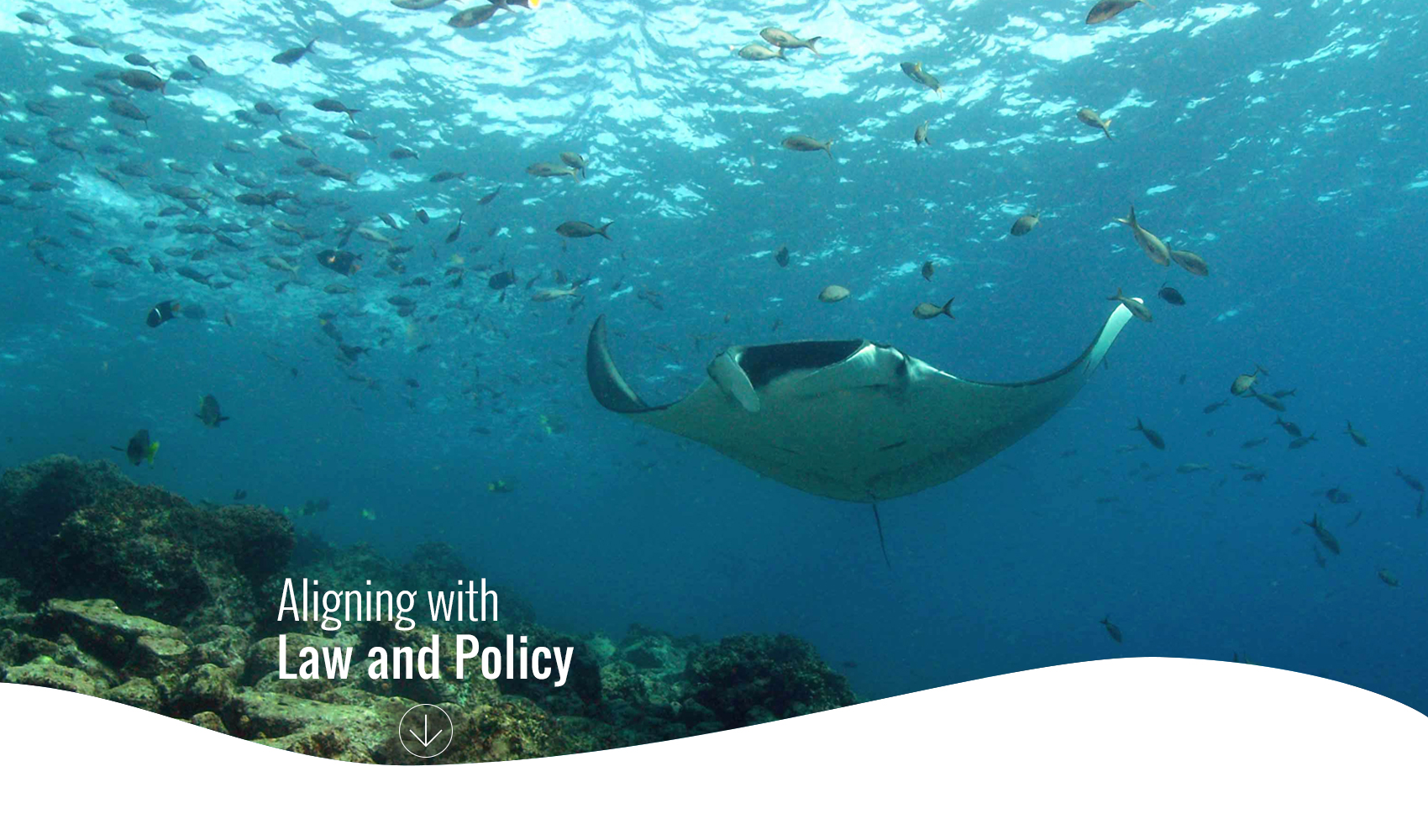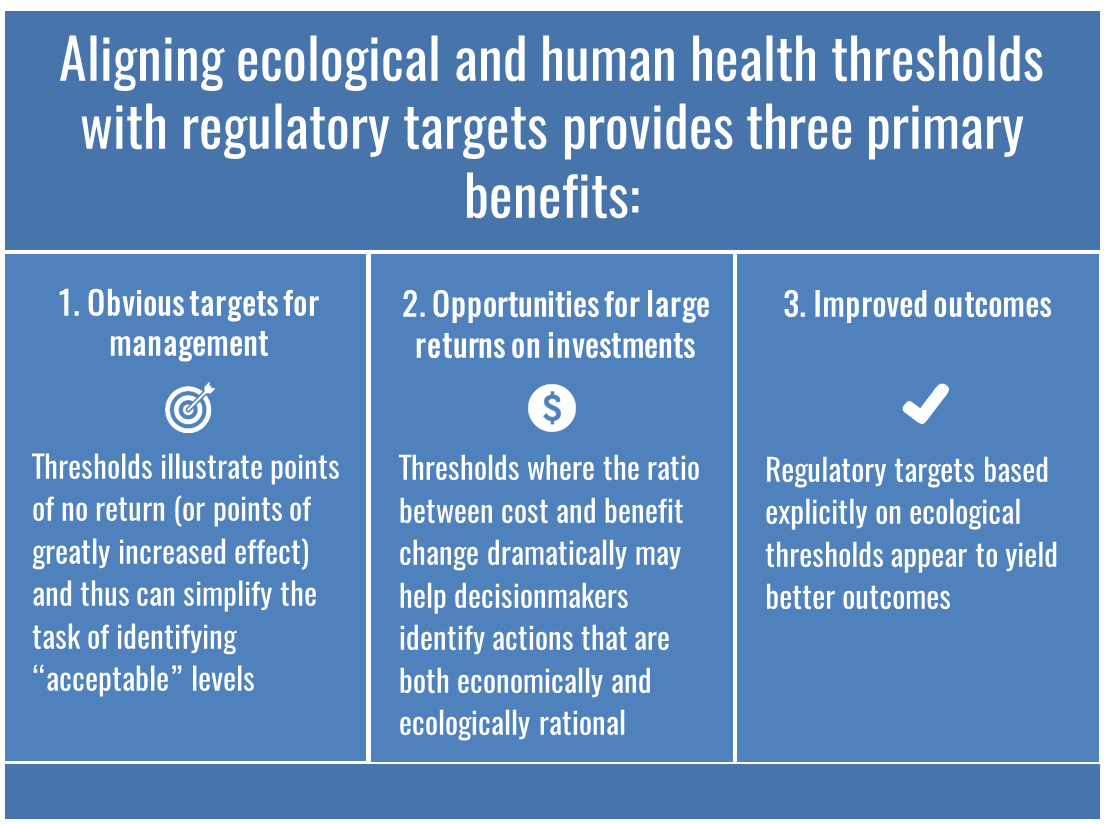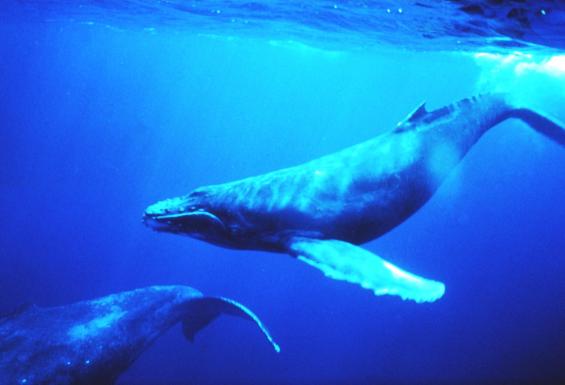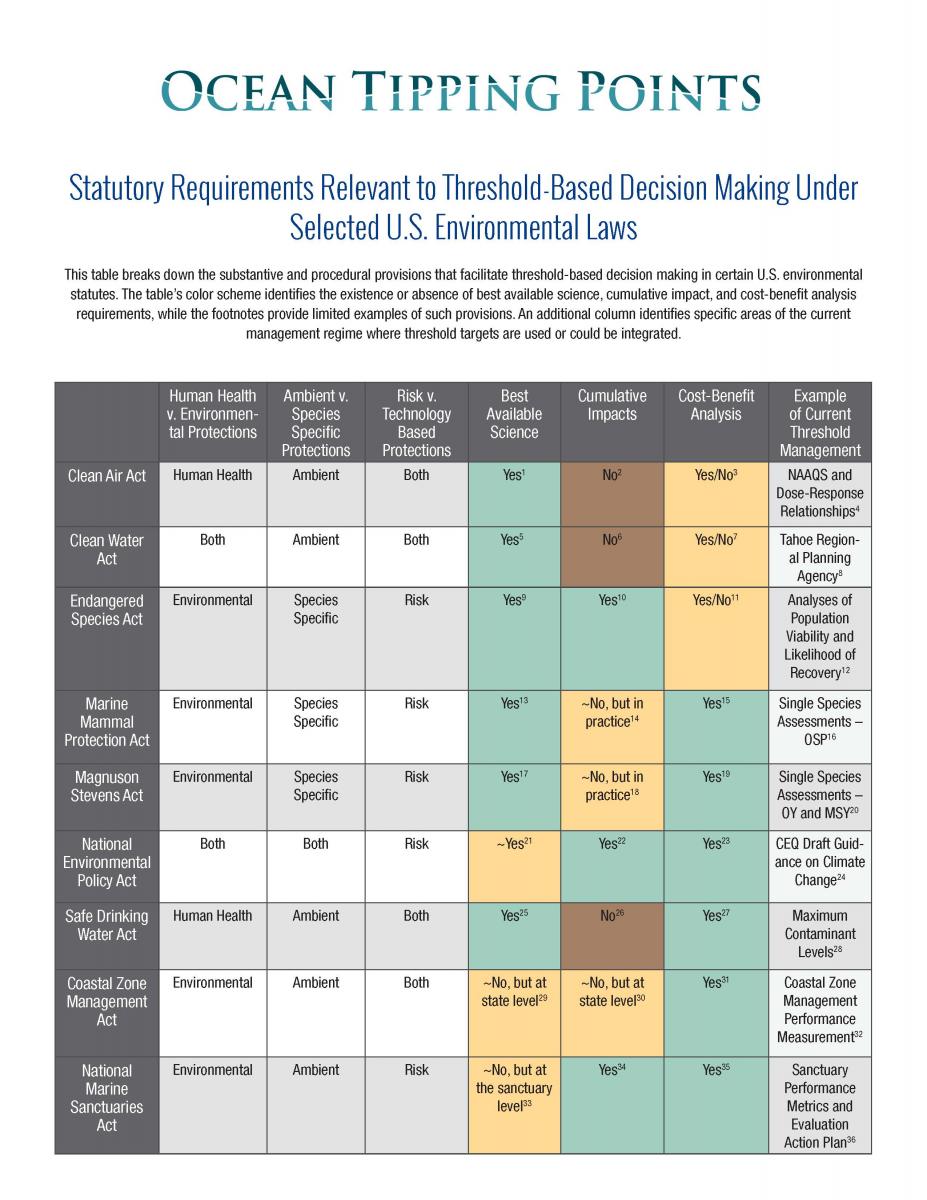Managing tipping points under select environmental laws
The table below breaks down the substantive and procedural provisions that facilitate threshold-based decision making in certain U.S. environmental statutes. The table details the existence or absence of best available science, cumulative impact, and cost-benefit analysis requirements and identifies specific areas where threshold targets are used or could be integrated when implementing these laws. Download the full table, including detailed footnote citations and examples.






